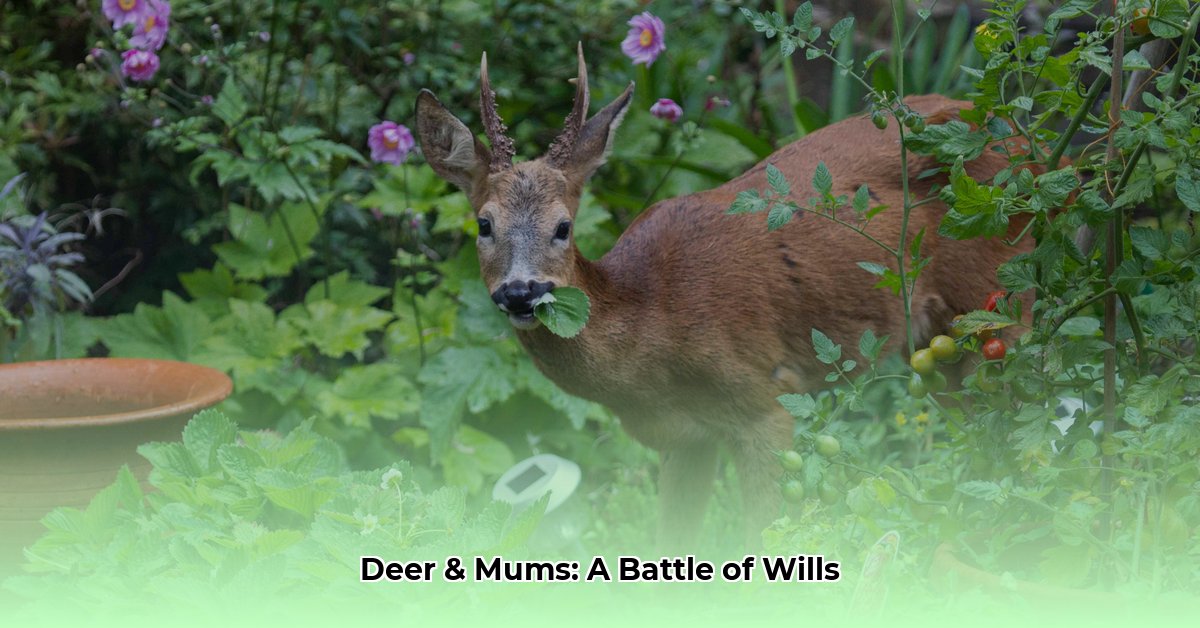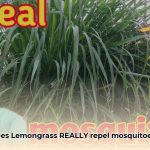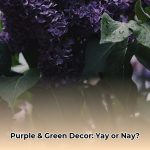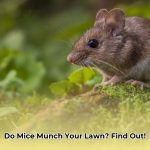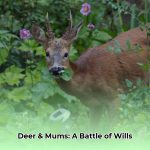Deer do eat mums, especially when their preferred food sources are scarce. This guide provides comprehensive solutions to protect your chrysanthemums and enjoy a vibrant autumn garden.
Why Deer Target Mums
Deer are opportunistic eaters. While mums aren’t their favorite snack, they become a viable food source when other options are limited, particularly in late fall and winter. Mums offer some nutritional value, but deer are more likely to browse on them when preferred forage is unavailable. The damage can range from light nibbling on blossoms to consuming entire plants, leaving behind ragged leaves and bare stems. Fresh spring growth is also appealing to deer.
Protecting Your Mums: A Multi-Layered Approach
Safeguarding your mums often requires a combined strategy. Implementing multiple deterrents creates a more robust defense than relying on a single method.
Fencing: Creating a Barrier
A sturdy fence is the most effective deer deterrent. Due to deer’s jumping ability, an eight-foot-high fence made of woven wire, polypropylene, or chain link is recommended. Angling the fence outwards or installing a double fence further enhances its effectiveness.
Companion Planting: Nature’s Deterrents
Certain plants have strong scents or textures that deer tend to avoid. Planting these near your mums can create a natural barrier. Effective companion plants include:
- Lavender: Its strong fragrance is often unappealing to deer.
- Rosemary: This herb’s pungent aroma can deter browsing.
- Mint: Mint’s strong scent can mask the smell of your mums and confuse deer.
- Daffodils and Peonies: These flowers contain toxins that deer avoid.
- Marigolds: These bright flowers emit a strong odor that deer often dislike.
Repellents: Store-Bought and DIY
Commercial deer repellents are available at garden centers and can be effective, but require frequent reapplication, especially after rain. For a natural alternative, consider homemade repellents.
DIY Repellent Recipe:
- Mix 1 tablespoon of liquid dish soap (like Dawn) with 1 quart of water.
- Add a few drops of hot sauce and a couple of crushed garlic cloves.
- Spray generously on your mums, coating all exposed leaves.
Other DIY options include using rotten eggs, garlic, or hot pepper.
Environmental Modifications: Making Your Garden Less Appealing
Deer prefer areas with cover. Removing shrubs, tall grasses, and debris around your mums eliminates hiding spots, making them feel more exposed. Trimming low-hanging branches also limits access to your mums.
Other Deterrents: Startling and Discouraging Deer
Motion-activated sprinklers, noisemakers (wind chimes, aluminum cans), and reflective surfaces (old CDs, aluminum foil) can startle deer. While effective initially, deer may habituate to these over time. Rotating deterrents can help maintain their effectiveness.
Deer-Resistant Alternatives: Choosing Wisely
If deer pressure is high, consider planting deer-resistant alternatives. While no plant is entirely deer-proof, some are less palatable. Choices vary by region and USDA Plant Hardiness Zone:
| Plant Name | Zone(s) | Bloom Time/Season | Notes |
|---|---|---|---|
| Autumn Joy Sedum | 3-9 | Fall | Drought-tolerant, attracts pollinators. |
| Caramel Coral Bells | 4-9 | Fall foliage | Colorful foliage, typically deer-avoided. |
| Brilliance Autumn Fern | 4-9 | Fall foliage | Adds texture and color to shady gardens. |
| Russian Sage | 5-9 | Late Summer/Fall | Aromatic foliage, deer tend to avoid it. |
| Coneflower | 3-9 | Summer/Fall | Attracts butterflies, known for hardiness. |
| Aster | 3-8 | Fall | Various colors, attracts pollinators. |
| Goldenrod | 5-9 | Fall | Yellow blooms, attracts beneficial insects. |
| Lamb’s Ear | 4-8 | Summer | Soft, fuzzy foliage, deer usually avoid. |
| Yarrow | 3-9 | Summer/Fall | Drought-tolerant, attracts beneficial insects. |
| Catmint | 3-8 | Summer | Aromatic foliage. |
| Bleeding Heart | 3-9 | Spring | Shade-loving, unique heart-shaped flowers. |
| Foxglove | 4-10 | Summer | Tall, stately plant with tubular flowers, can be toxic to deer. |
| Poppy | 3-9 | Spring/Summer | Vibrant blooms, some self-seeding varieties. |
| Begonia | 6-11 | Summer/Fall | Colorful foliage and flowers. |
Consult your local nursery or agricultural extension office for regionally appropriate options.
Combining Methods for Best Results
The most effective deer defense is a multi-pronged approach. Combining fencing, companion planting, repellents, environmental modifications, and other deterrents creates overlapping layers of protection.
Regional Considerations
Deer behavior and plant preferences vary by region. Contact your local agricultural extension office for specific information about deer pressure and recommended plants in your area.
Frequently Asked Questions
- Will my mums recover if deer eat them? If the damage is minor, mums may recover with proper care, especially perennial varieties. Prune away damaged portions and provide adequate water and fertilizer. Extensive damage may be fatal.
- Are some mum varieties more deer-resistant? Some varieties are less palatable due to taste or texture. Check with local nurseries or gardening experts for recommendations in your area.
Conclusion
While deer do eat mums, implementing these strategies can effectively protect your chrysanthemums. Combine methods, consider regional factors, and adapt your approach as needed to enjoy a thriving autumn garden. Ongoing research continues to offer new insights into deer behavior and control.
- Dora the Explorer Wipe-Off Fun: Safe & Mess-Free Activities for Little Explorers - April 18, 2025
- Does Lemongrass Repel Mosquitoes? Fact vs. Fiction + How to Use It - April 18, 2025
- Do Woodchucks Climb Trees?Fact vs. Fiction - April 18, 2025
